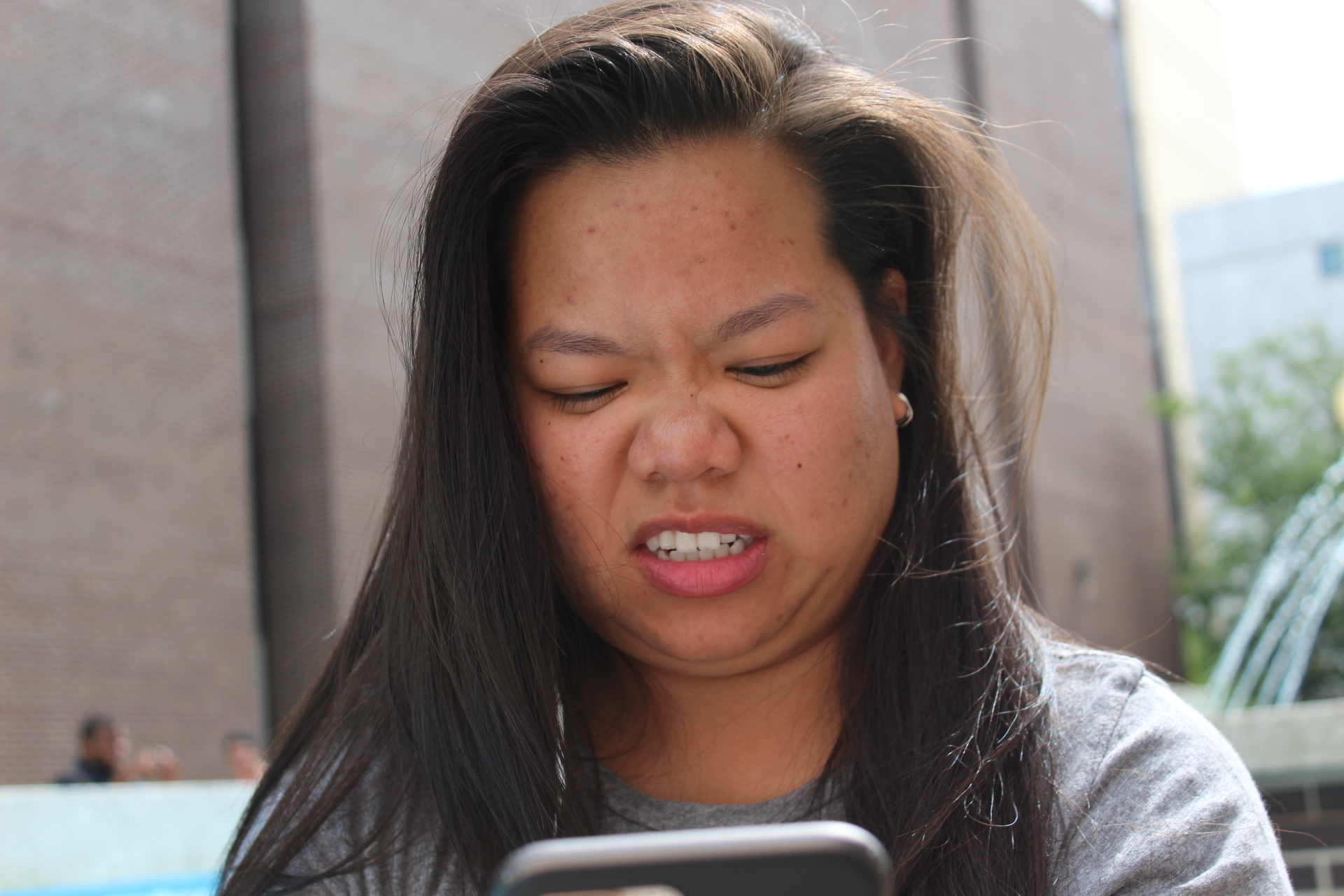
“Are you submissive?”
“Are you one of those Asian girls that likes white men?”
These are the kind of messages Angela Besso, a Korean-American student at Georgia State, regularly receives on Tinder. She said she is constantly barraged with the assumptions people make after seeing how she looks.
“An overwhelming amount of men that I do match with, very often point out the fact that I’m Asian and stereotypes that go along with my race,” Besso said.
Besso feels as though she isn’t seen as herself but instead for her race. She doesn’t have much success on Tinder; out of every 10 matches, she gets harassed in “at least four … it’s not like half but it’s about there.”
As for those who aren’t explicitly vulgar, Besso said most men can’t seem to move past her ethnicity, often steering the conversation back to things they assume she’d like, be it bubble tea or Korean barbecue.
“They’re always like, do you like Korean food or Japanese food or do you like this kind of tea or do you know of these restaurants on Buford Highway or in Duluth. Like dude, I’m from Decatur. I don’t know,” Besso said.
This phenomenon has a name: “yellow fever,” also referred to as Asiaphilia. Webster’s New World College Dictionary defines an Asiaphile as a derogatory term for a “Caucasian male with sexual interests in Asian women.”
Gerrick Huang, a Georgia State student, feels it’s due to how Asian people are portrayed, especially in the media.
“I’d say the media definitely represents a lot when it comes to attraction to different kinds of people,”
Huang said the Asian women he knows don’t like being on Tinder, so seeing one on the app feels like a magical experience.
“On Tinder you don’t really see a lot of Asian girls. They’re like a unicorn,” Huang said.
Huang thinks this might be due to lack of experience with Asian families in general and the lack of proper Asian representation in the media.
“Since this is America, if they see an Asian, they’ve probably never hung out with an Asian when they were little. They probably can’t relate to us,” Huang said.
A recent example of this media misrepresentation of east Asian women and culture is seen in Nicki Minaj’s music video, “Chun Li.” Minaj poses as “Chun Li,” a character in stereotypical east Asian attire with “Chinese ink on,” “Siamese links on” and “chopsticks in [her] bun.” Minaj used traditional east Asian dress and east Asian people while provocatively dancing and singing in overtly sexual costumes and positions.
With this kind of media representation, “yellow fever” is spreading fast through TVs and computers, infecting the lives of east Asian women just trying to find love (or lust) on dating apps.
Facebook’s dating app, “Are You Interested,” analyzed 2.4 million heterosexual interactions and found that all men except Asian men preferred Asian women. The response rate to Asian women on the app was as follows:
Black men: 26 percent
Latino men: 15.8 percent
White men: 17.6 percent
Chelsea Hawkins, an Asian-American writer for Mic, wrote, “The tendency of non-Asian men to fetishize Asian women, lusting after their ‘exotic’ appeal or assigning them offensive stereotypes, has turned online dating for Asian women into a minefield of unwanted sexual advances and problematic questions.”
Bella Wilson, a Chinese-American transfer student from Young Harris, said she doesn’t feel comfortable using Tinder.
“Tinder is a scary place. In terms of romantic relationships or even potential hookups, I usually don’t go anywhere near it,” Bella said. “It’s a lot of guys asking if I’m into anime or will dress up for them … It makes me feel pretty apprehensive about dating in general, especially online dating.”
Some online dating apps like Grindr allow users to sort by race and display biographies such as “whites only” and “no Asians.” And while Grindr has attempted to resolve criticism by launching an initiative called “Kindr” earlier this year, many are still upset, like Sinakhone Keodara, an Asian man currently suing Grindr for racial discrimination.
With 50 million users on Tinder and countless new dating sites popping up, the conversation on racial preference in the online dating sphere has grown immensely. Many new apps are moving toward a “person first, photo last” approach, using interests and values to help match people before they can use the other person’s race to decide for themselves.
